BSC 2085L lesson 5
1/23
There's no tags or description
Looks like no tags are added yet.
Name | Mastery | Learn | Test | Matching | Spaced |
|---|
No study sessions yet.
24 Terms
Main parts
skull, vertebral column, and bony thorax
vertebral column consists of
-24 vertebrae separated by intervertebral discs composed of fibrocartilage
-sacrum
-coccyx
C1
atlas- lacks body and spinous process, allows head to nod
C2
axis- has dens (odontoid process) for head rotation
C1-7 distinguishing features
- triangular vertebral foramen
- transverse processes contain foramen for vertebral arteries traveling to brain
- C7 (vertebra prominens) landmark for counting vertebra
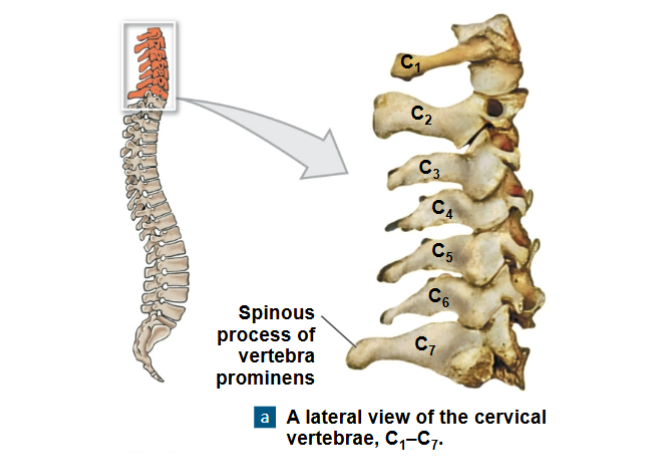
Thoracic vertebrae: T1-12 distinguishing features
- heart shaped body
- small articulating surfaces/costal facets articulate with head of rib
- round vertebral foramen
- transverse costal facets articulate with rib tubercles
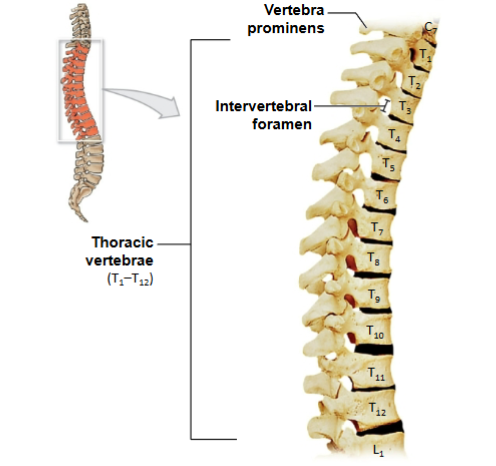
lumbar vertebrae: L1-5 distinguishing features
– block-like body & short thick spinous process
– superior articular process pointing posteromedial
– inferior articular process pointing anterolateral
– spinal cord ends at superior area of L2
– Spinal/lumbar ‘tap’ performed between L3 and L4 or L4 and L5 to minimize injury to spinal cord

intervertebral foramen
exists between inferior notch of a superior vertebra and superior notch of an inferior vertebra for nerves to enter/exit spinal cord
sacrum
formed by fusion of 5 bones
sacral promontory
anterior border of S1
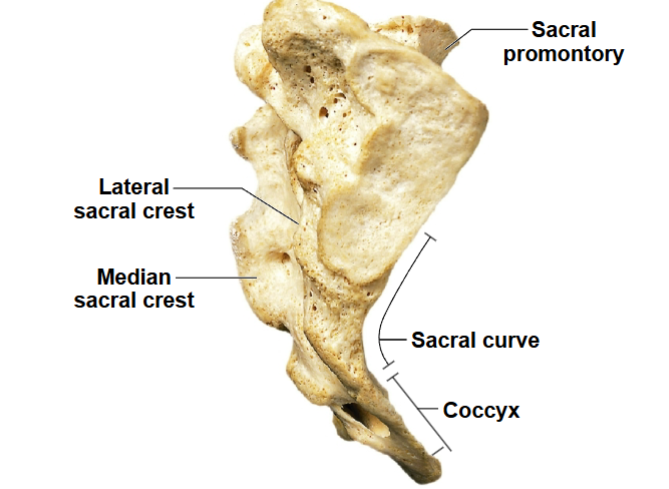
median sacral crest
remnant of fused spinal processes
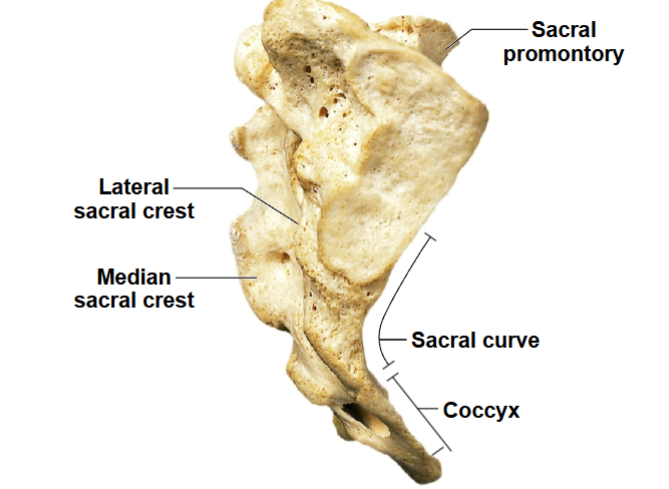
ala
formed by fusion of transverse processes
transverse ridges
site of vertebral fusion
anterior/posterior sacral foramina
passage for blood vessels and nerves
coccyx
tailbone- formed by fusion of 3-5 irregularly shaped vertebrae
attached to sacrum by ligaments
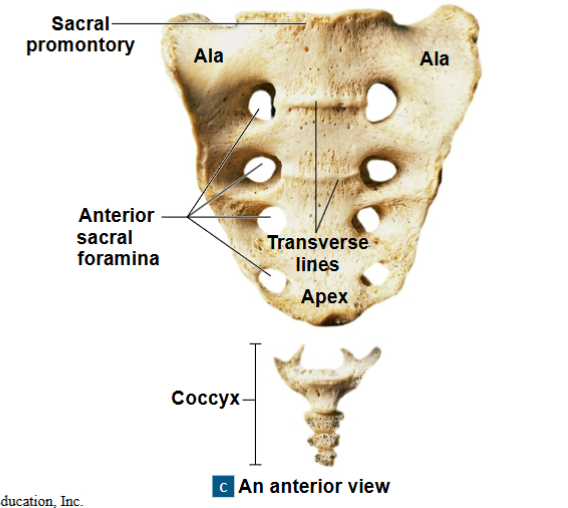
scoliosis
kyphosis
excessive posterior thoracic curvature
lordosis
excessive lumbar curvature
bony thorax composed of
- sternum
- ribs (12 pairs)
- thoracic vertebrae: anchoring sites for ribs